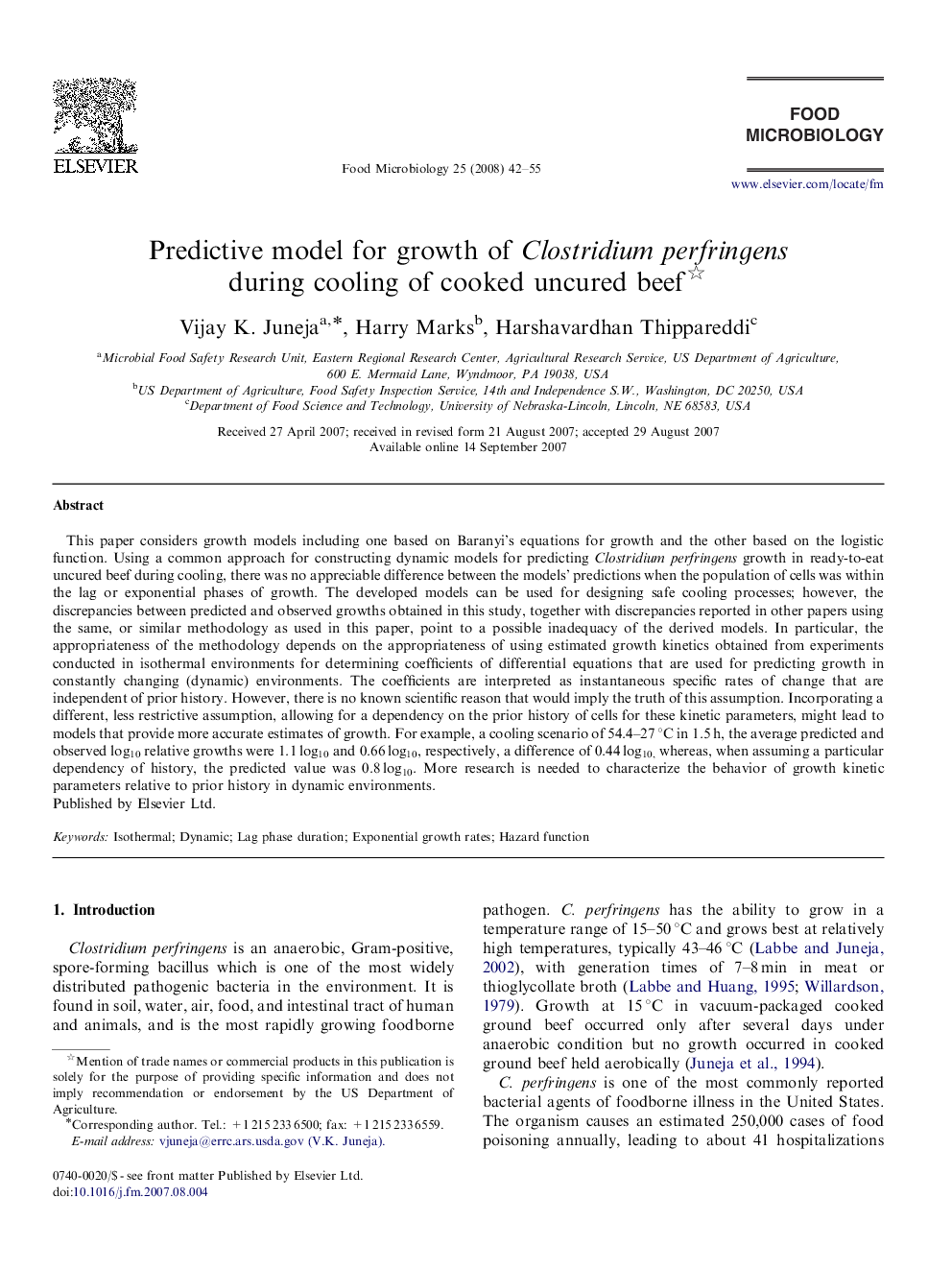| Article ID | Journal | Published Year | Pages | File Type |
|---|---|---|---|---|
| 4363977 | Food Microbiology | 2008 | 14 Pages |
This paper considers growth models including one based on Baranyi's equations for growth and the other based on the logistic function. Using a common approach for constructing dynamic models for predicting Clostridium perfringens growth in ready-to-eat uncured beef during cooling, there was no appreciable difference between the models’ predictions when the population of cells was within the lag or exponential phases of growth. The developed models can be used for designing safe cooling processes; however, the discrepancies between predicted and observed growths obtained in this study, together with discrepancies reported in other papers using the same, or similar methodology as used in this paper, point to a possible inadequacy of the derived models. In particular, the appropriateness of the methodology depends on the appropriateness of using estimated growth kinetics obtained from experiments conducted in isothermal environments for determining coefficients of differential equations that are used for predicting growth in constantly changing (dynamic) environments. The coefficients are interpreted as instantaneous specific rates of change that are independent of prior history. However, there is no known scientific reason that would imply the truth of this assumption. Incorporating a different, less restrictive assumption, allowing for a dependency on the prior history of cells for these kinetic parameters, might lead to models that provide more accurate estimates of growth. For example, a cooling scenario of 54.4–27 °C in 1.5 h, the average predicted and observed log10 relative growths were 1.1 log10 and 0.66 log10, respectively, a difference of 0.44 log10, whereas, when assuming a particular dependency of history, the predicted value was 0.8 log10. More research is needed to characterize the behavior of growth kinetic parameters relative to prior history in dynamic environments.
